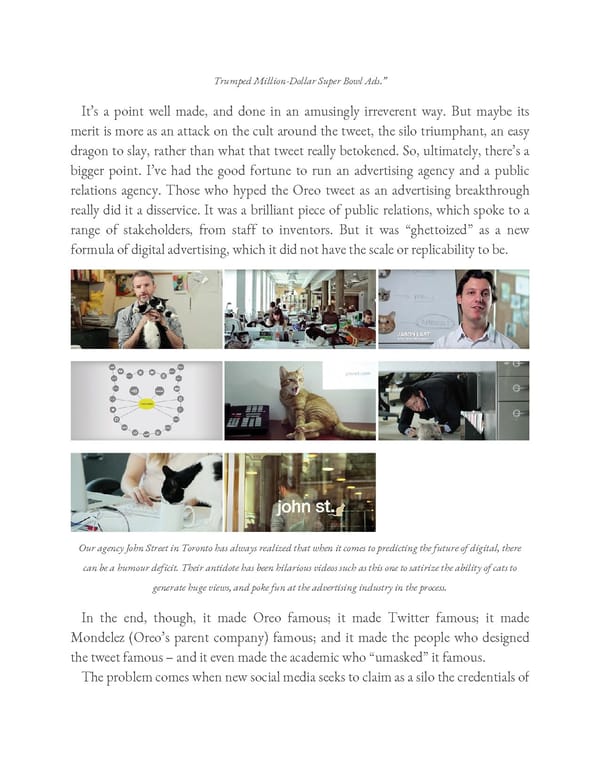Trumped Million-Dollar Super Bowl Ads.” It’s a point well made, and done in an amusingly irreverent way. But maybe its merit is more as an attack on the cult around the tweet, the silo triumphant, an easy dragon to slay, rather than what that tweet really betokened. So, ultimately, there’s a bigger point. I’ve had the good fortune to run an advertising agency and a public relations agency. Those who hyped the Oreo tweet as an advertising breakthrough really did it a disservice. It was a brilliant piece of public relations, which spoke to a range of stakeholders, from staff to inventors. But it was “ghettoized” as a new formula of digital advertising, which it did not have the scale or replicability to be. Our agency John Street in Toronto has always realized that when it comes to predicting the future of digital, there can be a humour deficit. Their antidote has been hilarious videos such as this one to satirize the ability of cats to generate huge views, and poke fun at the advertising industry in the process. In the end, though, it made Oreo famous; it made Twitter famous; it made Mondelez (Oreo’s parent company) famous; and it made the people who designed the tweet famous – and it even made the academic who “umasked” it famous. The problem comes when new social media seeks to claim as a silo the credentials of
 Ogilvy on Advertising in the Digital Age Page 70 Page 72
Ogilvy on Advertising in the Digital Age Page 70 Page 72